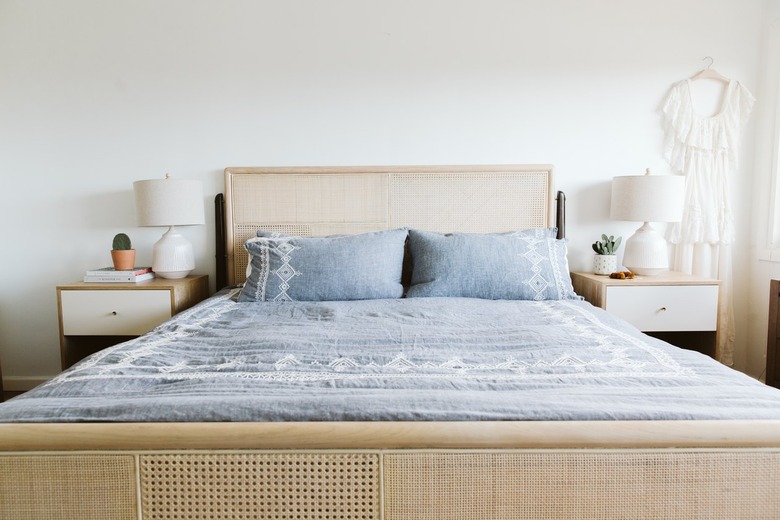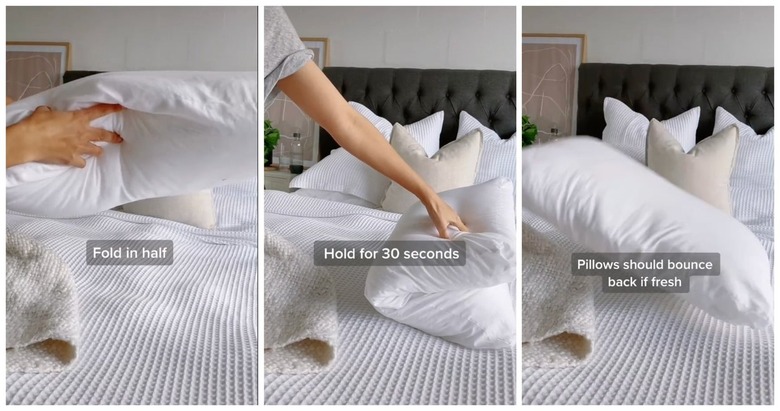Can Pillows Actually Expire?
As soon our head hits the pillow, the hope is that we will ease into a restful slumber. But sometimes, no matter what we try — turning off our phones, meditating, or dimming all sources of light — the tossing and turning prevents us from getting an adequate amount of sleep.
Could the culprit be our pillows? Let's be real — how often do people replace their pillows? Are we doing the pillow "test" inspired by this TikTok video? Probably not. Most of us don't give their pillows a second thought, assuming they will last forever.
However, it turns out that pillows do have a shelf life and need to be replaced (yikes!). We asked the experts to weigh in on pillow expiration dates and tell us more about when exactly we should be replacing our pillows.
Do pillows expire?
Do pillows expire?
"Pillows don't have an expiration date, and the amount of time a pillow lasts will be totally dependent on its usage and how much wear and tear it actually endures," Yoselin Castro, senior interior designer at Mackenzie Collier Interiors, tells Hunker. Generally, the longer the pillows have been in use, the less likely it is that they will provide the support you need.
Castro adds that other signs of wear and tear include the pillow material fading or falling apart, a lingering odor, stains, or any noticeable lumps that just don't seem to go away. "A lumpy pillow is a pillow that needs to be replaced as it can lead to uneven neck and back support, and frequent tossing and turning," adds Castro.
Is there a test to determine if a pillow needs replacement?
Is there a test to determine if a pillow needs replacement?
There is, in fact, a quick way to find out if a pillow needs replacement. According to Castro, take one pillow and place it on a flat clean surface like a table. "Then, take your finger and firmly press down on the center of the pillow. If the pillow returns to its original shape right away, it is still in good shape to continue using it. If it stays flat, it might be time to replace it with a new one," Castro says.
When do pillows need to be replaced?
When do pillows need to be replaced?
Our bodies are constantly changing, especially with age, so it's hard to say exactly when bedding items need to be replaced, says Castro. However, Derek Hales, founder and editor-in-chief of NapLab.com, tells Hunker, "Most experts believe that all pillows should be replaced every one to two years. Depending on the material, usage, and environment, you may be able to achieve three to four years of life." Hales notes that the latter is on the absolute upper end of how long a typical pillow lasts.
Karin Sun, textile veteran, best sleep practices expert, and founder of Crane & Canopy, tells Hunker about other signs that indicate a pillow needs replacement: If you're coughing, sneezing, and showing signs of allergies at night — no matter how often a pillow is washed — that likely means there is a build-up of dust mites on the pillows. If you notice pain or stiffness in your neck, it is also likely that the pillow has lost its support and became flat.
In addition, if your face and neck show signs of breakouts or acne, the pillow could be carrying dirt, oil, and other stains that do not come out in the wash. "If a pillow simply isn't comfortable anymore and you have trouble sleeping, take some time to notice and think about if your pillow is adding comfort or tension at night," adds Sun.
Castro agrees that when it's time to replace pillows, your body will probably let you know.

